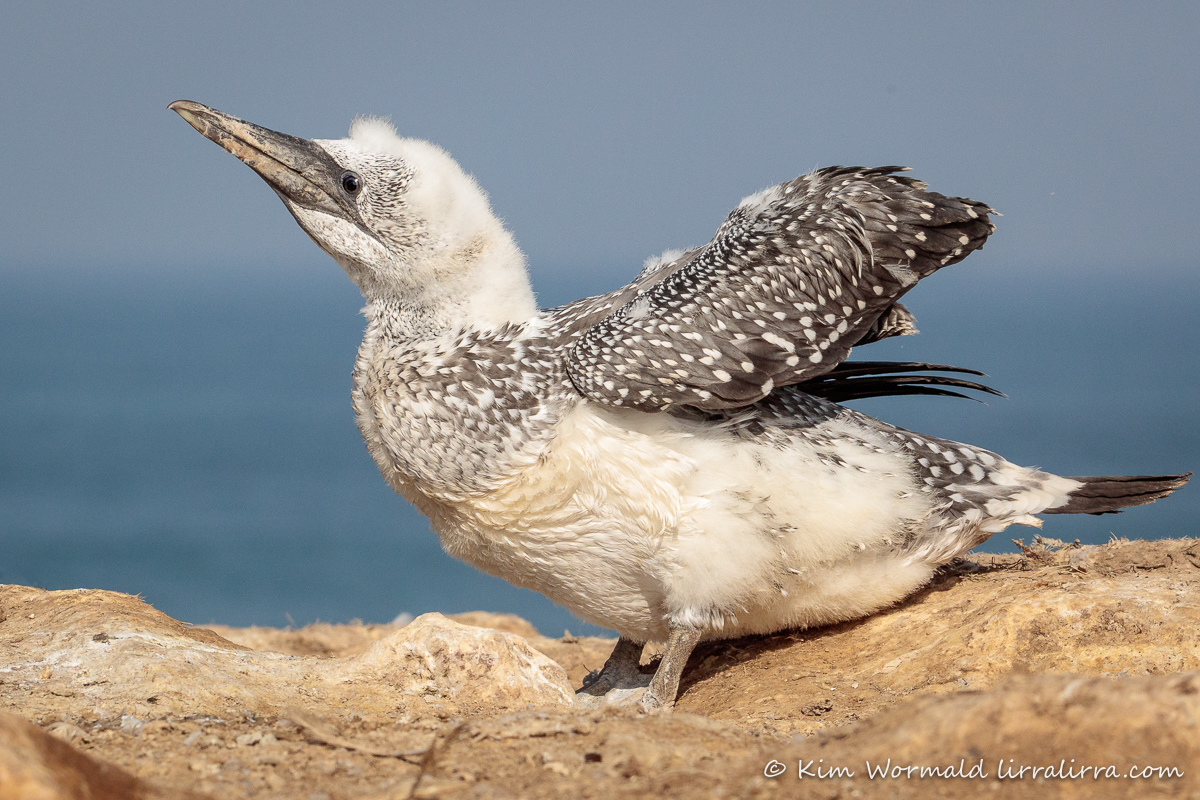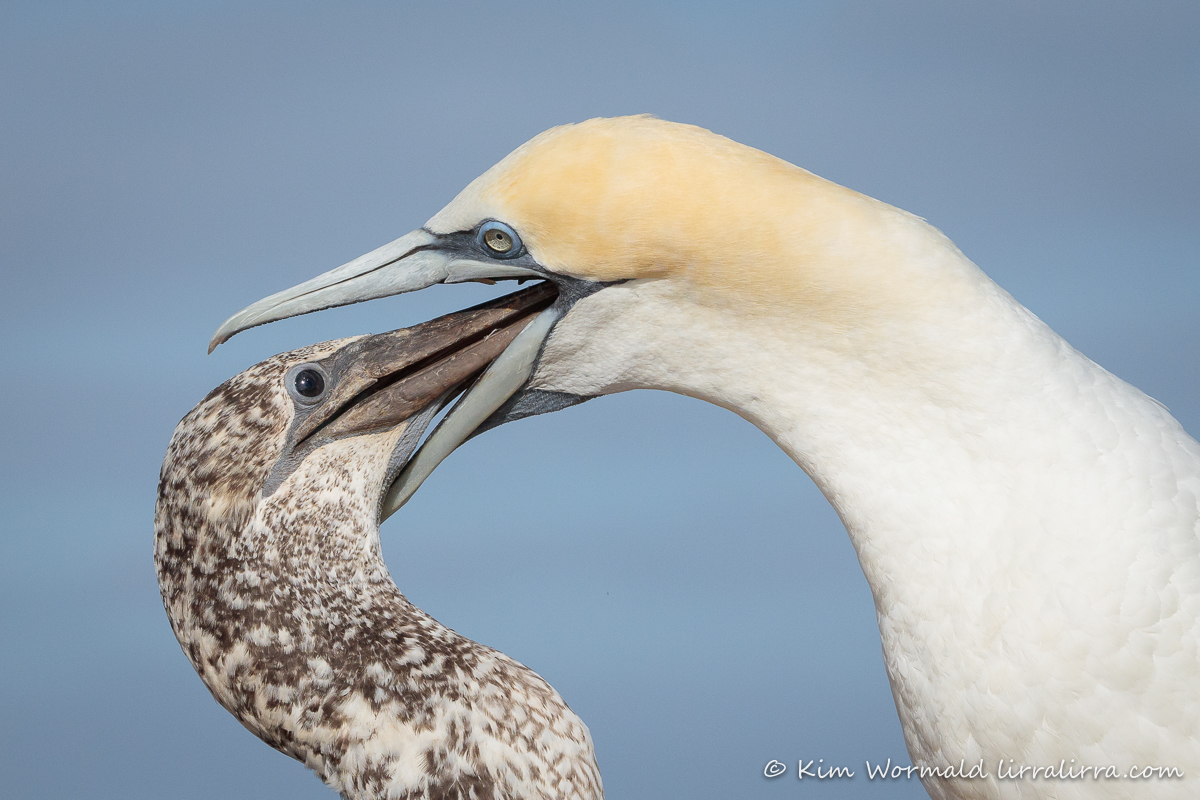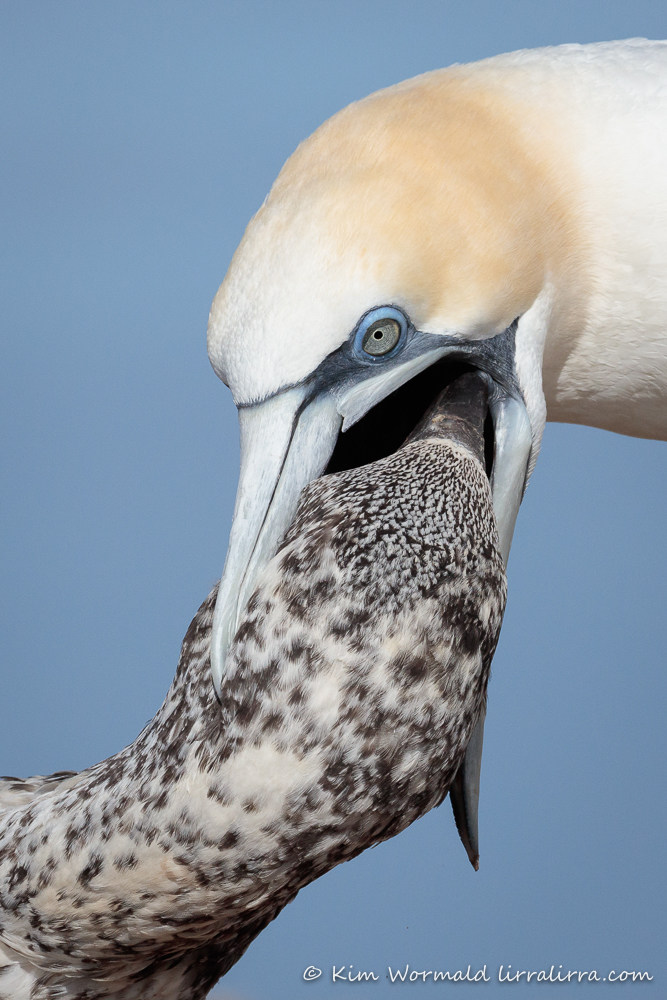Regular readers will know that we’ve just welcomed baby twin girls to our family (shivers of delight). I’m very baby oriented at the moment, so here are a couple of young gannets that kept their parents nice and busy.
 Australasian Gannet (Morus serrator)
Australasian Gannet (Morus serrator)
1/2500, f/14, ISO 1600
Canon 5DsR, Canon 200-400 L IS USM EXT
I absolutely love visiting Point Danger at Portland in Victoria to spend time shivering on the exposed rocks and being liberally splatted with copious amounts of gannet whitewash. I grew up being told it was lucky to be pooped on by a bird but I’d never imagined quantities quite like the amounts expelled by gannets.
It’s often tricky to get an image of an Australasian Gannet at a colony without getting several other birds, or parts of birds, also in the picture. It’s great to have a long lens to focus on a distant bird in the brief, and often rare, moment that I get a clear view.
The young bird above still has quite a bit of its original fluff on its head, underparts and even on its wings but new feathers are sprouting. New feathers begin as pin feathers, which are just visible as keratin sheaths peeking out from the fluff. Young birds usually wait quietly for parents to return with food and gannets are no exception, unless they are squabbling with their neighbours. I would have said that young birds always wait quietly if I hadn’t witnessed nestling Eastern Yellow Robins calling incessantly while their parents were foraging, it made me so concerned for their safety.

Australasian Gannet (Morus serrator)
1/2500, f/10, ISO 800
Canon 5DsR, Canon 200-400 L IS USM EXT
Once the parent bird returns the racket begins! Young gannets beg noisily and tap the parent’s bill until the regurgitation process begins – which makes me glad I’m not a gannet.
 Australasian Gannet (Morus serrator)
Australasian Gannet (Morus serrator)
1/3200, f/10, ISO 800
Canon 5DsR, Canon 200-400 L IS USM EXT
The process is noisy and frenetic. To capture these images I needed super fast shutter speeds of 1/2500th and 1/3200th of a second. Looking at the image above I realise that it could also look like the adult is attacking the youngster.
I think gannets are stunning birds, their colours are exquisite and their flying (and pooping) skills are extraordinary.
Happy birding
Kim
NB I have finally created a Kim Wormald – lirralirra facebook page, my regular lirralirra posts will continue here as usual – many thanks to everyone who has clicked ‘like’ on the new page, you make me happy
~ Thank you for visiting and commenting
~ If you would like a weekly email letting you know that lirralirra has been updated please use the ‘subscribe’ box above right

Oh my God ! It’s wonderful !!!! You are so lucky !
Hope you are well.
Good to hear from you Nathalie, I wondered where you’d disappeared to
Wow those are some stunning captures..
Congrats on the new babies!
Hi Hena, could you email me with the link to your blog? Thank you!
Wonderful photos, Kim. Makes my own throat feel a little uncomfortable though!
Thanks Katherine. It’s definitely not good to think about in too much detail!
So many birds are incredibly noisy (and insistent) when their parents return. A trait which effortlessly crosses the species divide.
Loved this series, and suspect you are still floating on air about your own family additions. Tickled to hear that they have indeed already been present at a bird watching…
I’m glad you asked the birding question EC as it’s good to have the reply in print. Yep, I’m still floating on air
Excellent narrative Kim
Thank you Bill 🙂